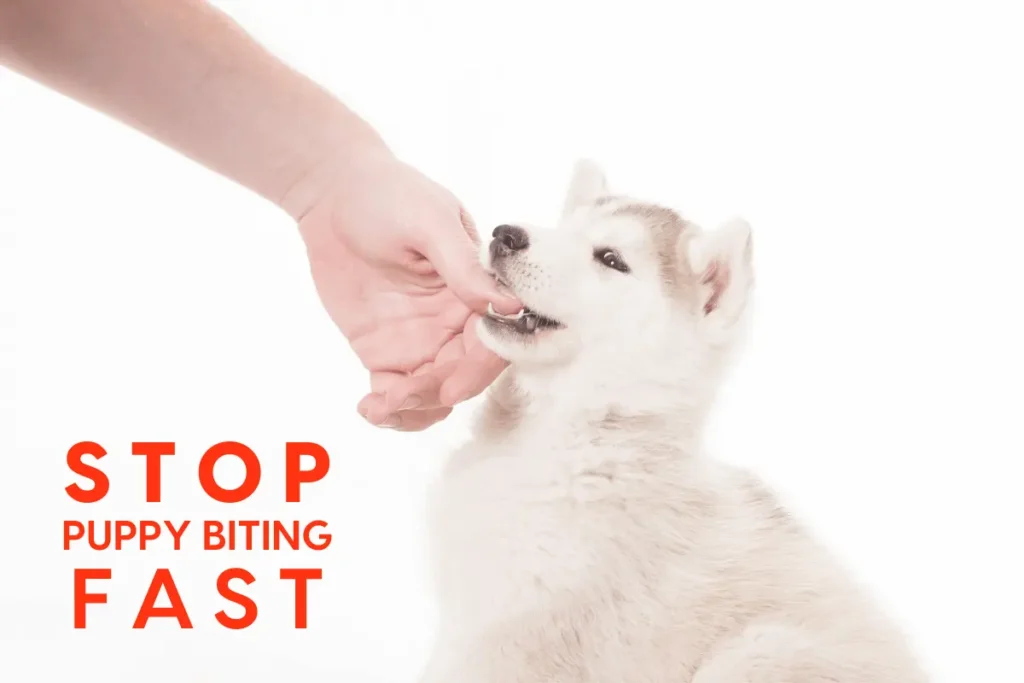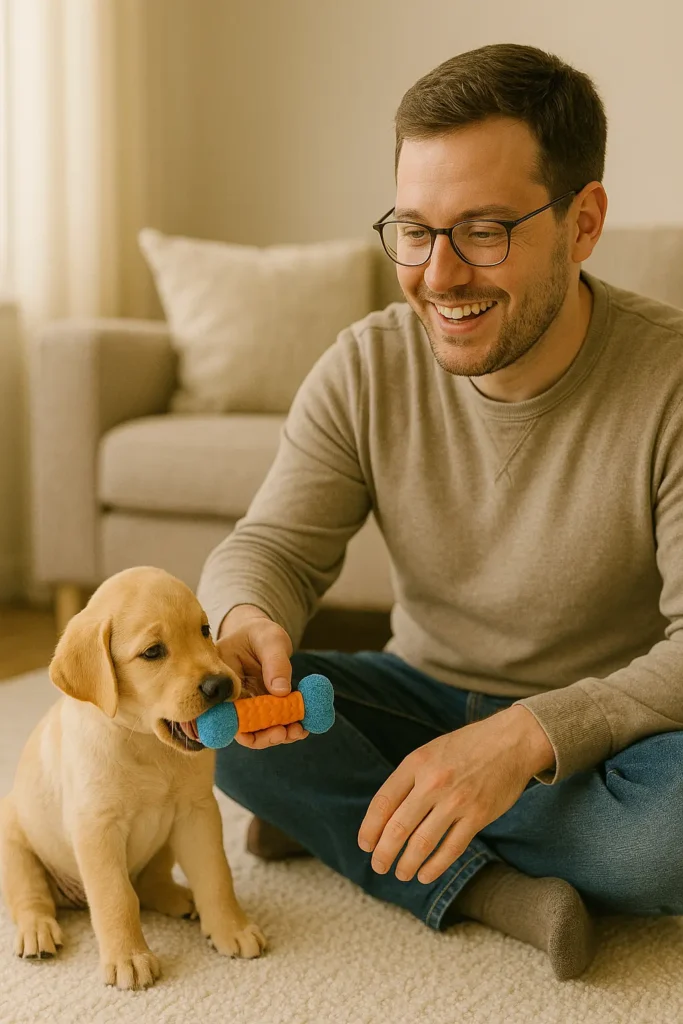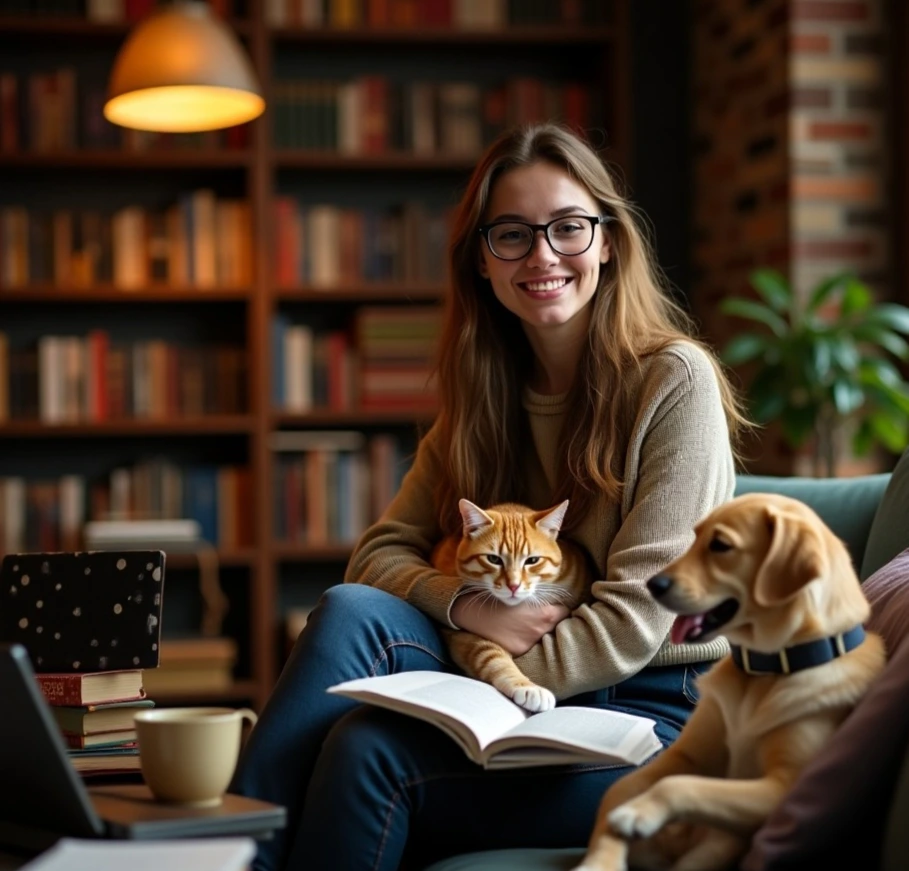Bringing home a new puppy is one of life’s greatest joys. Their wagging tails, puppy kisses, and boundless energy can brighten even the dreariest day. But if you’re like most new puppy parents, you’ve probably discovered there’s a less adorable side to puppyhood: those sharp little teeth! Learning how to train a puppy not to bite you is one of the most important lessons you’ll teach your furry friend-and it’s a journey that requires patience, understanding, and a bit of humor.
In this guide, I’ll share everything I’ve learned from raising my own dogs, working with trainers, and talking to other pet parents. We’ll explore why puppies bite, how to respond, and step-by-step strategies to help you train your puppy not to bite you. Let’s turn those nips into gentle kisses!
Table of Contents
Why Do Puppies Bite?
Before diving into how to train a puppy not to bite you, it’s helpful to understand why puppies bite in the first place. Trust me, your pup isn’t being “bad”-they’re just being a puppy!

1. Exploring the World
Puppies are like toddlers: everything goes in their mouths! Biting and mouthing are how they learn about their environment. From your shoes to your fingers, it’s all part of their discovery process.
2. Teething
Between 3 and 6 months, puppies lose their baby teeth and grow adult teeth. This process can be uncomfortable, so they chew and bite to soothe their gums. I remember when my Labrador, Daisy, was teething-she would gnaw on anything she could find, including my hands!
3. Play and Social Learning
Puppies naturally play with their siblings by wrestling and biting. This is how they learn bite inhibition-how hard is too hard-because their littermates will yelp or stop playing if bitten too hard. When you bring your puppy home, you become their new playmate!
4. Attention-Seeking
Sometimes, puppies bite simply to get a reaction. If you squeal, laugh, or move your hands, your puppy might think it’s a fun game.
5. Overstimulation or Tiredness
Just like kids, puppies can get cranky when they’re overtired or overexcited. Biting can be their way of saying, “I need a break!”
The Golden Rule: Never Punish, Always Teach
When learning how to train a puppy not to bite you, remember: puppies don’t bite out of malice. Harsh punishments like yelling, hitting, or holding their mouth shut can damage your relationship and make biting worse. Instead, focus on gentle, positive teaching.
Step 1: Set Up for Success
The first step in how to train a puppy not to bite you is creating an environment that encourages good behavior.
Puppy-Proof Your Home
- Remove tempting objects like shoes, cords, and children’s toys.
- Provide plenty of safe chew toys. I keep a basket of toys in every room so there’s always something handy to redirect Daisy’s attention.
Supervise and Manage
- Use baby gates or playpens to limit your puppy’s access when you can’t supervise.
- Schedule regular nap times-an overtired puppy is a bitey puppy!
Step 2: Redirect and Replace
When your puppy starts to nip, don’t just say “no.” Instead, show them what they should do.
Always Have a Toy Handy
If your puppy bites your hand, calmly say “Ouch!” and offer a chew toy instead. Praise them when they chew the toy. This teaches them what’s appropriate.
Try the “Find It” Game
Toss a treat a few feet away and say, “Find it!” This redirects your puppy’s attention and gives them a chance to calm down.
Teach “Sit” or “Down”
Ask your puppy to “sit” or “down” when they get mouthy. Reward calm behavior with treats and praise.
Step 3: Teach Bite Inhibition
Bite inhibition means teaching your puppy to control the force of their bite. This is a crucial skill for all dogs-even gentle dogs might need to use their mouth in emergencies, and a soft mouth can prevent injuries.
Mimic Puppy Play
When your puppy bites too hard, let out a high-pitched “Ouch!”-just like a littermate would. Immediately stop playing and ignore your puppy for a few seconds. This teaches them that biting ends the fun.
Resume Play
After a short pause, resume playing. If your puppy bites hard again, repeat the process. Consistency is key!
Gradually Discourage All Biting
Once your puppy learns to be gentle, start discouraging all nipping by redirecting to toys and rewarding calm, mouth-free play.
Step 4: Use Time-Outs Wisely
If your puppy gets too excited and won’t stop biting, calmly remove yourself from the room or place your puppy in a safe, quiet area for 30 seconds. Return and continue play when your puppy is calm. Time-outs aren’t punishments-they’re a chance for everyone to reset.
Step 5: Encourage Calm, Gentle Behavior
Reward your puppy for calm choices. If they sit quietly or chew a toy instead of your hands, shower them with praise, treats, or a favorite game. Positive reinforcement is the most effective way to teach your puppy not to bite you.
Step 6: Provide Plenty of Exercise and Mental Stimulation
A tired puppy is a well-behaved puppy! Make sure your puppy gets:
- Physical Exercise: Play fetch, go for short walks, or let them romp in a safe yard.
- Mental Stimulation: Try puzzle toys, training sessions, or scent games. My Daisy loves searching for treats hidden around the house.
Step 7: Socialize Your Puppy
Puppies learn a lot from other dogs. Arrange playdates with gentle, vaccinated puppies or calm adult dogs. Puppy classes are a great way for your pup to practice bite inhibition and polite play.
Step 8: Be Patient and Consistent
Learning how to train a puppy not to bite you takes time. Puppies don’t grow out of biting overnight, but with patience and consistency, you’ll see progress. Celebrate small victories and remember-this phase won’t last forever!

Real-Life Stories: Puppy Biting Success
Daisy’s Journey
When Daisy was a puppy, she loved to nip at my ankles, especially when I was cooking. At first, I tried saying “no,” but it just made her more excited. I switched to keeping a plush toy nearby and tossing it for her whenever she started nipping. Over time, she learned that toys were for biting, not my feet!
Max the Miniature Schnauzer
My friend Sarah’s puppy, Max, was a champion nipper. She joined a puppy class where Max learned to play gently with other puppies. The trainer showed her how to use time-outs and reward calm behavior. Within a few weeks, Max was much gentler-and Sarah’s hands were grateful!
Common Mistakes to Avoid
- Don’t use physical punishment: This can make biting worse and damage trust.
- Don’t encourage rough play: Wrestling with your hands teaches puppies that hands are toys.
- Don’t expect overnight results: Training takes time. Stay patient!
Frequently Asked Questions About How to Train a Puppy Not to Bite You
Q: Is biting normal for puppies?
A: Yes! Biting is a normal part of puppy development. It’s how they explore and learn. The goal is to teach them what’s appropriate.
Q: When should I worry about puppy biting?
A: If your puppy’s biting is aggressive (growling, snapping, drawing blood) or doesn’t improve with training, consult a professional trainer or behaviorist.
Q: How long does the biting phase last?
A: Most puppies outgrow biting by 6-8 months, especially with consistent training.
Q: What toys are best for teething puppies?
A: Look for rubber toys, frozen Kongs, or rope toys. Always supervise play and replace toys that are worn out.
Q: Should I let my puppy play with other dogs?
A: Yes, supervised play with gentle, vaccinated dogs can help puppies learn bite inhibition and social skills.
Expert Tips for Success
- Rotate toys: Keep things interesting by offering different textures and shapes.
- Schedule regular naps: Overtired puppies are more likely to bite.
- Stay calm: Puppies pick up on your energy. Responding calmly helps them settle.
- Teach kids to be gentle: Show children how to play with the puppy without using their hands as toys.
Advanced Training: Teaching “Leave It” and “Drop It”
As your puppy grows, teaching cues like “leave it” and “drop it” can help prevent unwanted biting and chewing.
Teaching “Leave It”
- Hold a treat in your closed fist.
- Let your puppy sniff, lick, or paw at your hand.
- When they stop trying, say “Yes!” and give them a treat from your other hand.
- Repeat, gradually adding the cue “Leave it.”
Teaching “Drop It”
- Offer your puppy a toy.
- When they take it, offer a treat in exchange.
- When they drop the toy, say “Drop it,” then reward with the treat.
- Practice until your puppy drops items on cue.
When to Seek Professional Help
If your puppy’s biting seems aggressive, is accompanied by fear or anxiety, or doesn’t improve with consistent training, don’t hesitate to reach out to a certified dog trainer or behaviorist. Early intervention can prevent bigger problems down the road.
Final Thoughts: Enjoy the Journey
Learning how to train a puppy not to bite you is a rite of passage for every dog owner. It can be frustrating at times, but it’s also a chance to bond with your puppy and set the foundation for a lifetime of trust and companionship.
Remember, patience and consistency are your best friends. Celebrate progress, forgive setbacks, and enjoy every goofy, wiggly moment with your pup. One day soon, those sharp puppy nips will be a distant memory-and you’ll have a gentle, well-mannered dog by your side.
If you found this guide on how to train a puppy not to bite you helpful, please share it with fellow puppy parents or leave your own tips in the comments. Happy training!
Sources: Personal experience, professional dog trainers, and veterinary advice.



